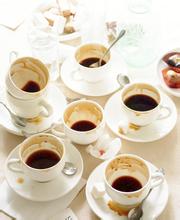Introduction to the planting environment of coffee flavor and taste in Joy Manor, Nicaragua with moderate acidity
High-quality Nicaraguan coffee, grown in the north and middle of the country. Coffee is a pillar industry in Nicaragua, producing nearly 100,000 tons of coffee beans every year. Many people who have tasted Nicaraguan coffee usually think that it is no different from Salvadoran coffee or Honduran coffee. It is full-bodied, smooth and delicate, with a slightly bitter finish, like a faint taste in a wine.
In many countries, coffee production will be seriously affected for political reasons. Nicaraguan coffee industry is no exception. The 1979 revolution forced coffee planters to flee to Miami. A period of indecision followed, when the government considered whether to redistribute land, including many plantations, which led to a shortage of coffee and a decline in production, from more than 1 million bags in the early 1970s to less than 600000 bags in 1990. Now the Government has opened up the coffee industry and private owners have taken control of the market. The best coffee is produced in Sinotega and Novo Segovia in Matagalpa. It has moderate acidity and delicious fragrance. Nicaragua is now one of the poorest countries in Central America. Because of its poor economic foundation, the coffee industry is still relatively backward, while coffee farmers are in extreme poverty. Fortunately, Nicaraguan coffee has received some foreign aid funds to improve the quality of its coffee. The coffee produced in Nicaragua's Madagelba, Sinodega and Segovia is highly respected by coffee lovers all over the world. In particular, the aroma of dried coffee from Madaguelba is rich in chocolate, accompanied by hazelnut and cocoa aromas. The wet aroma also has the smell of chocolate, accompanied by the smell of orange peel. With the baking degree of city+, the bright lemon acid and long cocoa finish are wonderful.
Dry aroma (1-5): 3.8
Wet aroma (1-5): 3.8
Acidity (brightness) (1-10): 8.9
Taste (layered) (1-10): 8.8
Palate (alcohol thickness) (1-5): 3.4
Aftertaste (residue) (1-10): 8.9
Balance (1-5): 2
Basic score (50): 50
Total score (maximum 100): 89.6
Strength / main attributes: medium strength / clear chocolate flavor with citrus and spice embellishment
Recommended baking degree: full city
Contrast: very delicate, clear, clear Nicaraguan Coffee Managua, the capital of Nicaragua, is located in the west of the border, on the south bank of Lake Managua, hence its name. The northwest is 140 kilometers away from the Collinto seaport on the Pacific coast. 55 meters above sea level. It is a Spanish city with beautiful scenery. Because it is located on the east side of the Pacific volcanic active seismic belt, there have been four strong earthquakes in the city in the past 100 years, one of which caused the worst damage to the city in December 1972. The rebuilt Managua has taken many important measures in reducing population density, moving large enterprises to other places and improving the earthquake-proof capacity of buildings. The word Managua comes from the Indian Naval language, and its meaning has two interpretations, one is "Mexican place", and the other is "waterside". About 10,000 years ago, there were human activities on the shores of Lake Managua, and the remains of ancient human activities can be seen from the Acorink site. As a result of natural disasters such as earthquakes, residents have moved many times. When the Spaniards conquered Nicaragua in the early 16th century, it was still an important Indian village. It became a city in 1846. It was designated as the capital of the Republic in 1852. From then on, it became the political center of the country.
Masaya
A city in southwestern Nicaragua and capital of Massaya province. Located at the eastern foot of Masaya Volcano, 25 kilometers northwest from Managua. The population is 43000 (1980). The industrial and commercial center of the surrounding agricultural area (which mainly produces tobacco). Famous for producing Indian handicrafts (embroidery, palm hats, etc.). There are tobacco, shoes, soap, leather and other industries. Convenient railway, road and air transportation

Important Notice :
前街咖啡 FrontStreet Coffee has moved to new addredd:
FrontStreet Coffee Address: 315,Donghua East Road,GuangZhou
Tel:020 38364473
- Prev

Introduction to the characteristics of Coffee growing Environment of Cliff Manor in Jamaica
Blue Mountain Coffee is the most superior coffee in the world, and the weather, geological structure and topography of Jamaica provide an ideal place. The ridge that runs through Jamaica extends to the eastern part of the island, with the Blue Mountains rising to more than 2100 meters. Cool weather, foggy, frequent precipitation, use this rich soil Rain Water to reconcile. Here, the mixed planting method is used to plant coffee trees to make them mix with incense in terraces.
- Next

Introduction to the coffee flavor and taste planting environment of the refreshing Congo Manor in Nicaragua
On 18 August 1986, the Constitution of Nicaragua was adopted by the National Assembly and entered into force in January 1987. The Constitution was amended three times in February 1995, January 2000 and December 2004. According to the Constitution, Nepal is an independent, free, autonomous, unified and indivisible country; the central authority of the state is composed of the President, the National Assembly, the Supreme Court and the Supreme Election Commission; and the President and members are elected.
Related
- Does Rose Summer choose Blue, Green or Red? Detailed explanation of Rose Summer Coffee plots and Classification in Panamanian Jade Manor
- What is the difference between the origin, producing area, processing plant, cooperative and manor of coffee beans?
- How fine does the espresso powder fit? how to grind the espresso?
- Sca coffee roasting degree color card coffee roasting degree 8 roasting color values what do you mean?
- The practice of lattes: how to make lattes at home
- Introduction to Indonesian Fine Coffee beans-- Java Coffee producing area of Indonesian Arabica Coffee
- How much will the flavor of light and medium roasted rose summer be expressed? What baking level is rose summer suitable for?
- Introduction to the characteristics of washing, sun-drying or wet-planing coffee commonly used in Mantenin, Indonesia
- Price characteristics of Arabica Coffee Bean Starbucks introduction to Manning Coffee Bean Taste producing area Variety Manor
- What is the authentic Yega flavor? What are the flavor characteristics of the really excellent Yejasuffi coffee beans?

